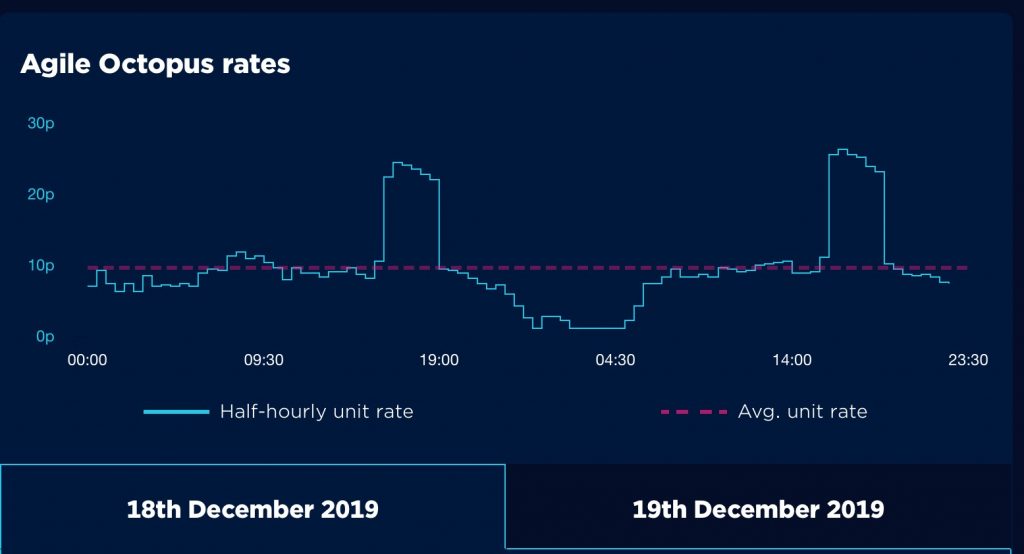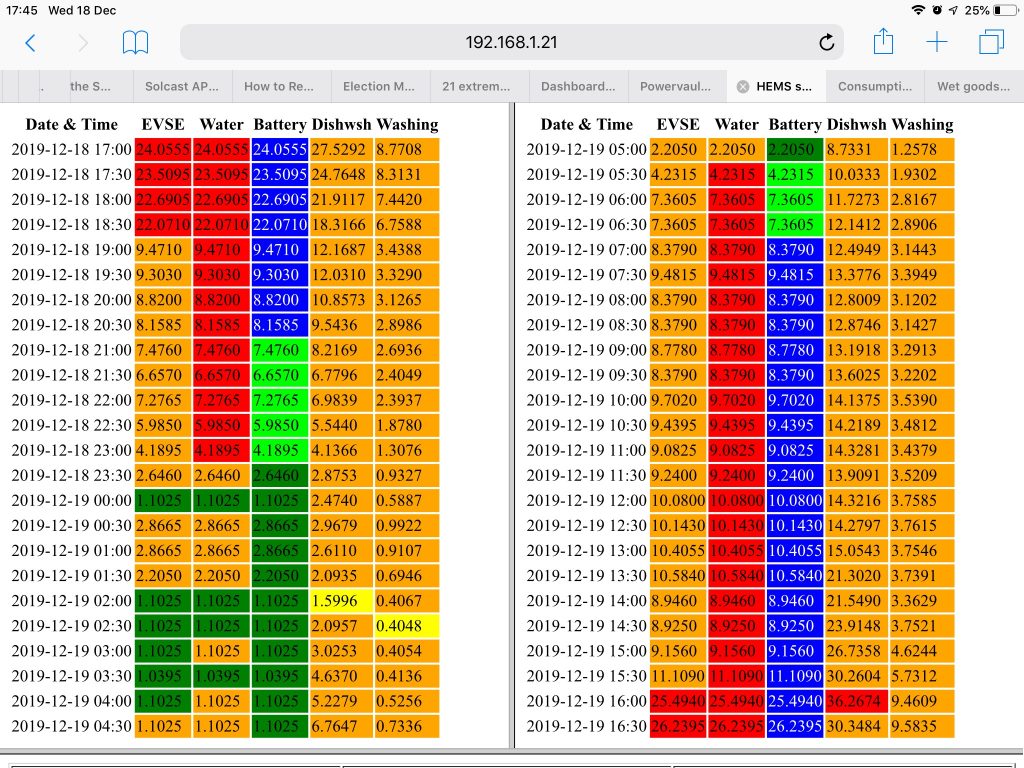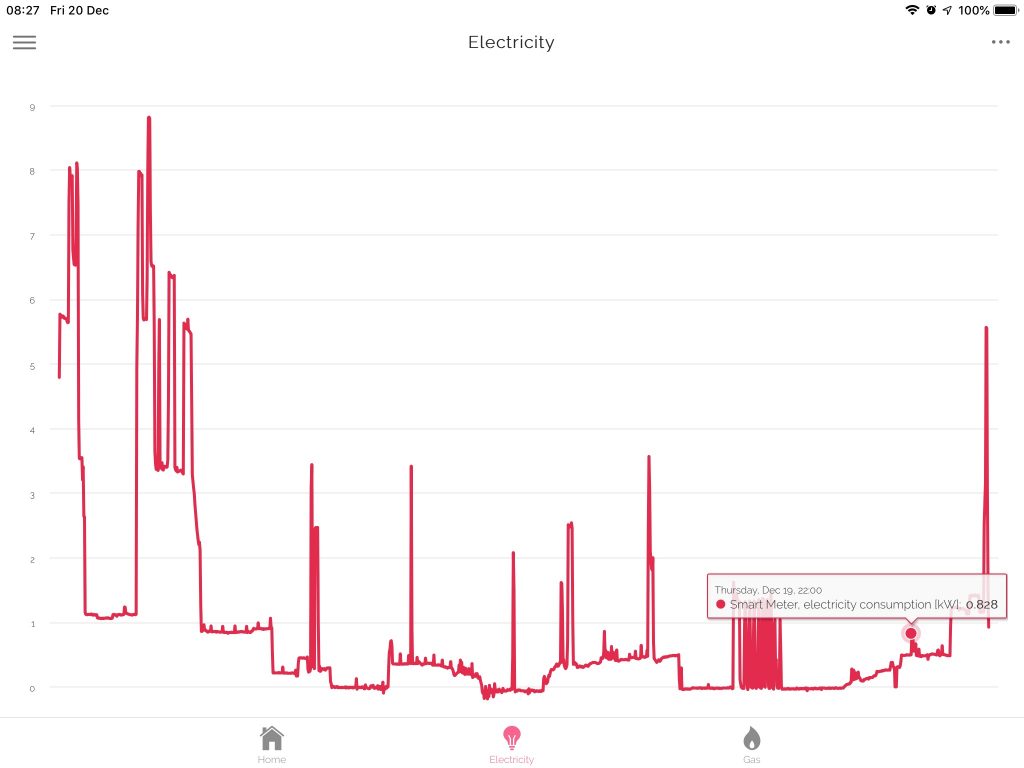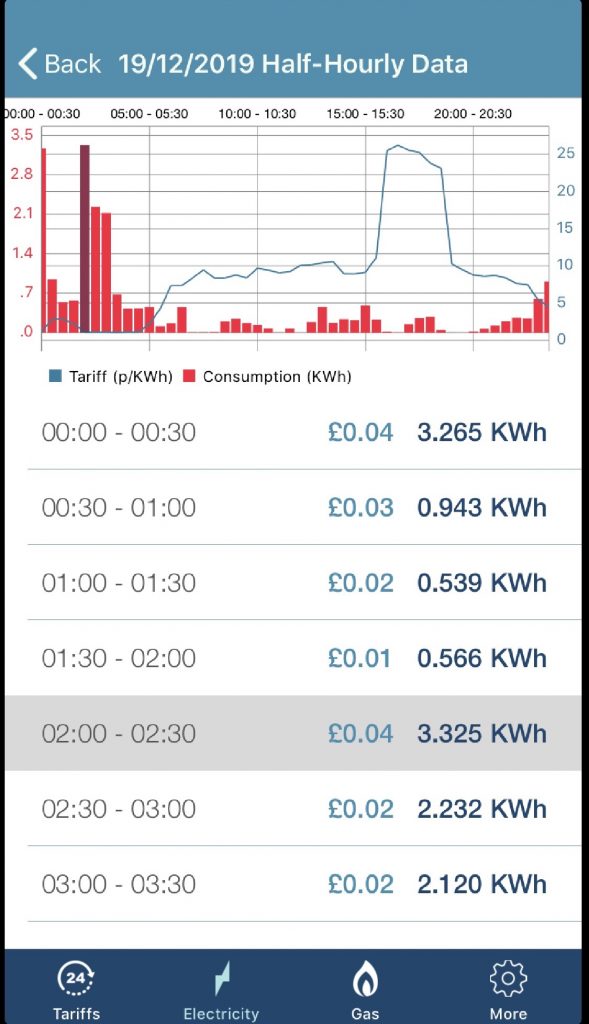So, over the last few days I’ve been adding control of my wet goods (dishwasher and washing machine) to my HEMS so that it can start washing loads at the optimum time – that is the times with the lowest projected electricity cost for a typical wash cycle.

The above image shows the prices for December 18th and 19th as downloaded by the HEMS at 16:45 on the 18th after publication of prices for the 19th. The HEMS then reviews this pricing against the need for electricity to determine when to use electricity and, in the case of the battery when to discharge the battery. I currently have the HEMS configured to provide:
- 3 hours of car charging
- Not more than 2 hours of water heating (but only when electricity is cheaper than gas which can also heat water)
- 6 hours of fixed battery charging.
- Best start time for dishwasher and washing machine.

I’ve described the operation of car charger, water heating, and battery previously; the new content here is the two final columns on each side for dishwasher and washing machine. The numbers in the columns are the estimated cost of a washing cycle if started at the beginning of the corresponding half-hour. The yellow colouring reflects the selected half-hour to start the appliance i.e. the one with the lowest estimated cycle cost. There’s also the option to set a threshold above which one is not prepared to pay to wash today which has resulted in the red box. If the whole day was red then the washing cycle would be deferred for consideration the next day.

The extract from the WIFIPLUG history for the dishwasher shows the typical operating sequence:
- @22:19 I turn the WIFIPLUG on to enable the dishwasher to be programmed and the cycle started. The plug for the dishwasher is inconveniently at the back of a low kitchen cupboard so this was achieved via the WIFIPLUG app.
- @20:20 I turn the WIFIPLUG off via the app suspending the cycle in its first moments.
- @02:00 the HEMS turns the plug on remotely allowing the dishwasher cycle to continue.
The equivalents for the first two actions for the washing machine can more conveniently be achieved via the push button on the WIFIPLUG itself as the plug for the washing machine is above the counter.

The above image shows the measured power consumption from my smart meter. Almost 9 kW is being drawn at times under the action of the HEMS when the electricity price is cheapest, but also zero at times when the price is highest. The washing machine contributes to the peak spike around 02:00 when both it and the car charger are enabled. The later spiking during the peak period is the electric oven cycling on and off under control of its thermostat as the battery isn’t powerful enough to run the oven, so the excess power is drawn from the mains.

The screenshot above shows the half-hourly electricity consumption and costs from Octopus. It should be noted that this is half-hourly consumption in kWh whereas the prior chart was power so, for example, an average 6.6 kW of power consumption results in 3.3 kWh of energy consumption in a half-hour. That the blue line of price is almost the inverse of the red cost columns indicates the HEMS is doing its job to shift most energy use to when the energy price is lowest, and use the battery to offset demand when the price is highest.
Overall on the 19th I paid £1.07 for 21.776 kWh of electricity including standing charge which is independent of use. That’s 86 p for 21.776 kWh without the standing charge, or a weighted average of 3.95 p/kWh. That weighted average of 3.95 p/kWh compares to a range of 1.10 to 26.24 p/kWh during the day. According to UK power the average cost of electricity in the UK is 14.37 p/kWh so I paid 27.5% of the average UK price on December 19th.
